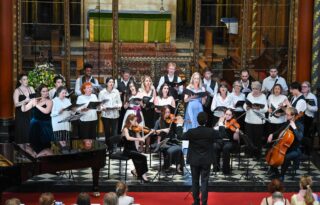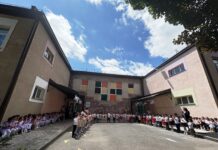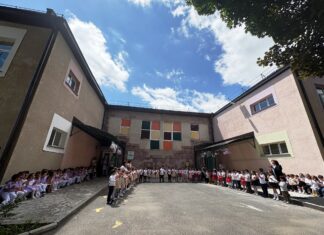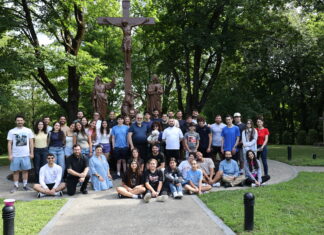By Nancy Kalajian
Special to the Mirror-Spectator
WASHINGTON — When a B-24D Liberator disappeared 67 years ago, shortly after its takeoff at an airbase in New Guinea during World War II, the fate of all 11 crew members was an unsolved mystery, that is, until recently. Fast forward to March 25, at Arlington National Cemetery in Virginia where a full military ceremony and burial of the crew’s remains took place, including that of Staff Sgt. Roy Surabian of Medford, 24, the plane’s radio operator.
It took nearly seven decades, but Roy Surabian’s family can now have some closure as to his and his crewmates’ fate, knowing that they weren’t captured. In tribute to Roy, his brother Charles Surabian of Medford traveled to Virginia for the military burial with his son Steven, and four nieces, all residents of Massachusetts.
Though there had been a search some years after the plane’s disappearance, it wasn’t until 1984 that the government of Papua New Guinea notified the US of plane debris and bone fragments found in a steep jungle ravine there. Then in 2004, human remains found by local villagers were carefully examined. Some years later, Roy Surabian’s nearest living relatives — his sister Alice Surabian Kevorkian and brother Charles Surabian — submitted samples of their DNA to the US military to establish his identity from the remains. Alice died a few years later, not knowing if any of the remains belonged to her brother. But her two daughters, Cheryl Kevorkian Keane and Pamela DiBella, went to the ceremony in Virginia along with their cousins, Deborah Surabian and Valerie Tersakian, daughters of the late Robert Surabian, Roy’s older brother. Their sister, Janette Surabian Nason, was unable to attend, but was there in spirit.
“A sad thing was that our parents didn’t have any resolution. All of his life, it was a heartache. My father wondered what happened, if Roy might have been captured and might even still be alive,” reflects Deborah Surabian. “My father had said he had a premonition something had happened. He got the message that Roy was missing. He held off telling the family and kept it to himself as a secret. He was trying to protect the family from heartache and the bad news.”







